Inside the Battle for Air Tourism Vs. the Right to Silence in Our National Parks
This article originally appeared on Outside
While visiting a national park, I'm hoping to get away from the sounds of traffic and text dings and modern-day noise. I want to see peaks and valleys and bears and elk. I want to see a lot--but hear nothing man-made. According to the National Park Service's Natural Sounds and Night Skies Division, roughly 72 percent of all national-park visitors say one of the most important reasons for preserving our parks is to experience the sounds of nature.
A helicopter on a scenic flight overhead as you're looking out over Bryce Canyon is not a natural sound. Some two dozen national parks are wrestling with how to preserve the natural soundscape for visitors and local wildlife, while trying to sustain an air-tourism economy (which the parks don’t profit from).
Collectively, there are 45,000 commercial scenic air tours over our national parks, and the vast majority haven't been regulated by the parks. In the last year, however, management for 10 parks have released air-tour management programs that dictate how many sightseeing fixed-wing and helicopter tours can take place above their land. One of those, Everglades National Park, eliminated sightseeing flights altogether in 2022. Another 14 parks, including Utah’s Arches National Park and Nevada’s Lake Mead National Recreation Area, are in the process of developing plans.
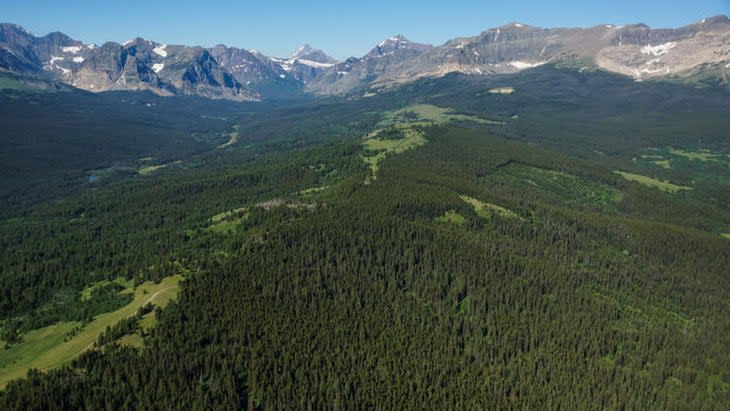
The parks were spurred into decision-making by a 2019 lawsuit filed by the non-profit Public Employees for Environmental Responsibility (PEER), which resulted in a court order demanding that any park hosting more than 50 sightseeing air tours a year develop a management plan by August 22, 2022. Twenty-four parks, including top-bill destinations like Glacier, in Montana, and Great Smoky Mountains, in Tennessee and North Carolina, were named in the resulting court order.
More than half of those parks are still working through the National Environmental Policy Act (NEPA) review process, which will include environmental studies and public comments on the specifics of each plan. But 10 parks, including Glacier, Arches, Great Smokies, and Canyonlands and Bryce in Utah, have released plans in the last six months that grandfather in a certain amount of air traffic based on the number of flights in each between 2017 and 2019.
The review process originally arose in 1986 after two tour aircraft collided over Grand Canyon National Park, killing 25 people. At the time, the Grand Canyon was seeing 100,000 sightseeing flights a year. In August of 1987, Congress created the National Parks Overflights Act, asking the National Park Service (NPS) to identify the overflight problems in its system. The Federal Aviation Administration (FAA) and NPS were able to create a flight-management plan for Grand Canyon by that December, establishing designated routes and minimum altitude for flights.
But the park service didn't deliver a report to Congress addressing the issue at a national level until 1994, stating that the FAA and NPS should work together to develop rules that would aid in the preservation of natural quiet in parks, but be park specific.
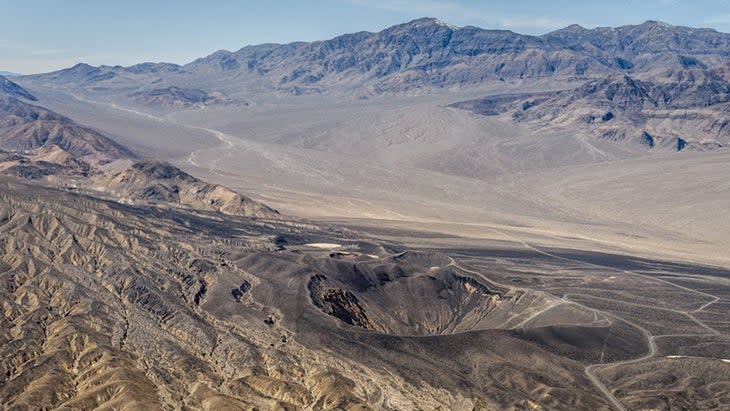
The current plans are the first attempt by the NPS to regulate commercial air tours on a large scale, mandating routes and heights of the aircraft as well as flight volume.
Glacier has been working on the issue of air tourism for 20 years. The park protects more than 1,500 square miles of largely roadless wilderness. Sightseeing tours have occurred over it for decades without much regulation in regards to their impact on wildlife and the visitor experience. But Glacier’s new air-tour management plan aims to cap flights at 144 per year and phase out all commercial flights by December 31, 2029.
"Our body of work has elevated natural sounds in the park as a primary resource we want to maintain," says Peter Webster, deputy superintendent of Glacier National Park. "The park wants to protect its soundscapes and its wilderness value."
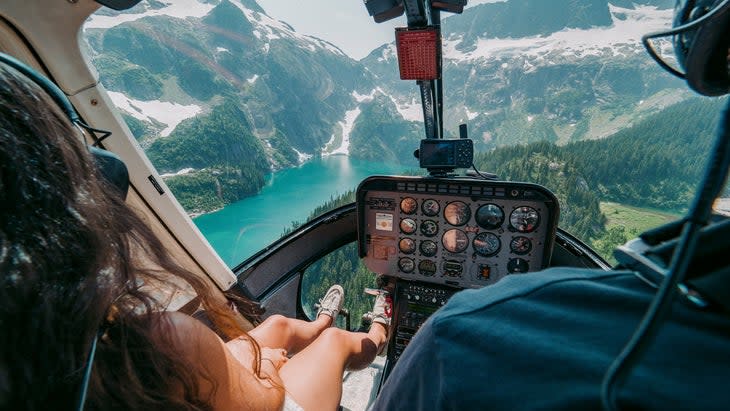
Glacier park officials have been trying to preserve the park's soundscape since 1999, when they developed its current General Management Plan, which called for a ban of commercial air tours over its boundaries. According to the Natural Sounds and Night Skies Division of the NPS, sound levels in high air-traffic corridors in a park's backcountry can be elevated by up to 5 decibels, drastically reducing the area in which predators can hear their prey, aside from the impact that helicopters or low-flying flights can have on visitors looking for peace and quiet.
"I was a backcountry ranger in Glacier in the early '90s, and sightseeing flights were a concern for me on the ground back then," Webster says. "It was bad. Public feedback was adamant about dealing with the noise, which led to the decision to cease flights in the General Management Plan."
The park, however, lacked the ability to proceed. Jeff Ruch, Pacific Director for PEER, explains that: "The FAA told Glacier that their jurisdiction stopped at the treetops."
The 1999 conflict in Glacier underscored the park-service-wide issues left unresolved after the original push to create air-tour management plans following the Grand Canyon accident. In 2000, Congress passed the National Park Air Tourism Act, which required the NPS and FAA to work together to develop air-tourism management plans for any park with 50 or more air tours over its landscape.
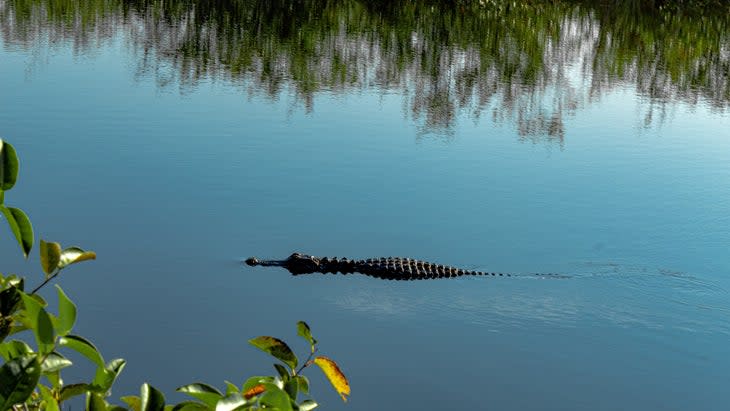
But no official plans were developed until PEER sued the FAA and park service four years ago on behalf of Glacier, Hawaii Volcanoes, and Haleakala National Parks, all of which were experiencing heavy sightseeing air traffic. In 2020, the U.S. Court of Appeals sided with PEER and ordered that the 24 eligible parks submit air-tour management plans by August 31, 2022.
"It's the only law I know of that requires two large federal agencies to produce a management plan," says PEER’S Ruch, speaking of the FAA and NPS. "The FAA's role is to promote commercial air, but the national park’s role is to protect the park. From what we can tell, it took more than two decades and a lawsuit to get any plans developed because the agencies couldn't agree on a management concept."
A representative in the public relations department of the FAA declined to comment for this story, but sent a statement, which reads in part, "The FAA has sole authority to control U.S. airspace and thoroughly reviews the plans to ensure they comply with all safety protocols." As of press time, efforts to reach the National Parks Overflights Advisory Program manager, who represents the NPS, were unsuccessful.
"I don't want to hear helicopters when I'm in the park either," one pilot says. "But a Cessna flying at 9,000 feet isn't loud. The wildlife don't even know we're there."
Red Eagle Aviation is the primary holder of flight permits over Glacier National Park. The company flies Cessna 206 planes, carrying up to five guests at a time on scenic flights several thousand feet over the park. According to John Noyes, chief pilot for the company, Red Eagle operates with wildlife and visitor impact in mind. "We stay way above the sensitive areas. Our guests will see Sperry Glacier, Heaven's Peak...all the big features, but from a safe distance. The way we currently do our tours has no impact."
Noyes is concerned that illegal helicopter tours that have flown over the park without a permit may have caused the park to take drastic action.

"I don't want to hear helicopters when I'm in the park either," Noyes says. "But a Cessna flying at 9,000 feet isn't loud. The wildlife don't even know we're there." Glacier Park tours, he says, are "a major revenue stream for this company. We fly 99 percent of the legal flights over the park."
Webster agrees that illegal flights were originally one of the top concerns of Glacier's park-management team, and says the main company then in question is no longer in operation. "Illegal flights are a concern and something we watch for," Webster says. "And we established a sunset date for tours of Dec. 31, 2029, to allow commercial operators to operate at a current level and have time to sort out their business practices before the ban takes effect."
In their statement to Outside for this story, the FAA said: "The NPS and FAA complied with all applicable laws including the National Parks Air Tour Management Act, the National Environmental Protection Act, the Endangered Species Act and the National Historic Preservation Act. An important part of the process for each park was a public comment period and public meetings where the agencies presented the draft plan and answered questions."
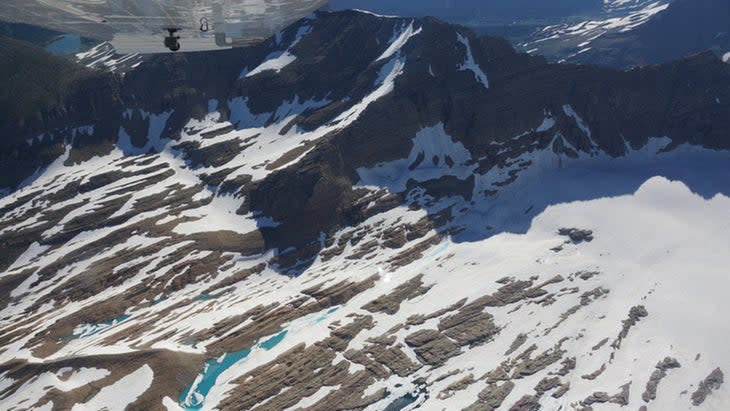
While Everglades National Park ended its air tours last year after the company that flew tours voluntarily surrendered its permit, of the nine other national parks that have submitted air-tour management plans, Glacier is the only one that has proposed phasing out flights altogether. Olympic and Mount Rainier National Parks, which see minimal sightseeing tours, have finalized their management plans. Olympic will allow 64 tours per year, and Rainier will allow one tour per year. (The average number of tours per year for Rainier between 2017 and 2019.) In contrast, Bryce Canyon's plan calls for 515 tours per year, and Great Smoky Mountains National Park will allow 946.
Webster is comfortable with Glacier's decision to phase out air traffic over the next six years and the decision process. "Air tours over Glacier have been a concern for decades, and the public has been overwhelmingly in support of our decision. It's a complex issue, and there's a lot of coordination that has to take place between two large federal agencies that look at things from different perspectives," Webster says. "Yes, it took us a while to get here, and it did take a lawsuit and court order to get us going. Sometimes that's what it takes with the government."
Graham Averill, Outside's National Parks columnist, lives in Asheville, North Carolina. He hasn't kept track of the number of national parks he's visited, but knows for sure that for every visit, his feet were firmly planted on the ground.
For exclusive access to all of our fitness, gear, adventure, and travel stories, plus discounts on trips, events, and gear, sign up for Outside+ today.

